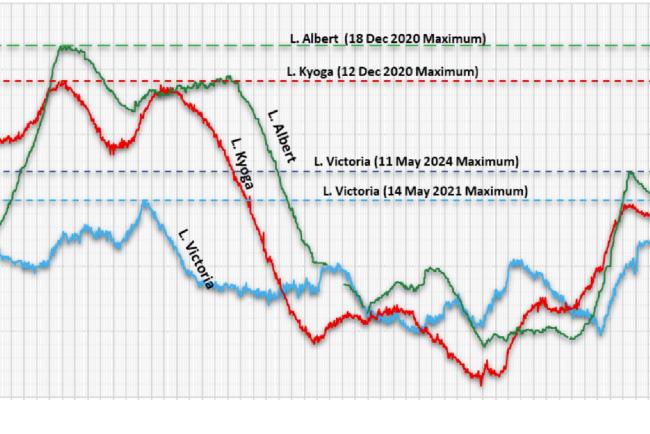Nile River Basin Seasonal Hydrological Outlook - June to September 2024

 The Nile Basin Initiative (NBI) has issued the June to September 2024 seasonal hydrological outlook for the Nile River Basin as an output of the Regional Expert Working Group.
The Nile Basin Initiative (NBI) has issued the June to September 2024 seasonal hydrological outlook for the Nile River Basin as an output of the Regional Expert Working Group.
The basin hydrological outlook indicates a period of high-river and lake water levels, sustained high lake inflows, and heightened risk of flooding across various regions, particularly along the White Nile.
The current operational restrictions at the Jebel Aulia Dam in Sudan, combined with expected high inflows due to expected above normal rainfall from the Baro-Akobo Sobat, Bahr el Jabel and Blue Nile rivers, are likely to exacerbate the flooding risk and potentially lead to dam failure. This situation requires urgent and coordinated actions to mitigate potential adverse impacts on communities, infrastructure, and ecosystems.
Lake Victoria Basin: Near-normal to above-normal rainfall will keep Lake Victoria's levels very high but stable. Tributaries may experience isolated flash floods. Shoreline areas will remain inundated, and disruptions to infrastructure services are expected to persist. Increased outflows from Lake Victoria are required to manage the water levels. There is a need to sustain the high outflows from the Lake to create sufficient room for the inflows during the October – November- December wet season.
Inflows from Lake Victoria and local rainfall will increase water levels, in Lakes Kyoga and Albert reaching the maximum levels in November or December exacerbating flooding around shorelines. Above-normal rainfall in Bahr el Jabel, Bahr el Ghazal, Baro-Akobo Sobat will lead to high flows in the White Nile and potential flooding in the areas of Bentiu, Mayom and Pariang. Other flood prone areas of Central Equatorial, Unity state Jonglei, Warap State, Upper Nile among others will likely be affected. National and local governments in the flood prone areas should.
- Enhance monitoring systems for real-time data on rainfall, water levels, and dam conditions information. Emphasis should be put on the emergency rehabilitation of the Malakal regional hydrological station that was recently destroyed by natural fire. The regional station is very critical for the early warning information in reference to the Jebel Aulia Dam.
- Establish early warning systems for communities at risk, particularly from Khartoum to Mellut and in flood-prone areas along the White Nile and its tributaries.
- Activate flood response management strategies in vulnerable countries and improve the emergency preparedness in each Member States considering the emerging challenges.
For media interviews and requests, kindly contact:
Ms. Juliet Nakasagga, Email: jnakasagga@nilebasin.org
Mr. Pape Ndiaye, Email: pndiaye@nilebasin.org
